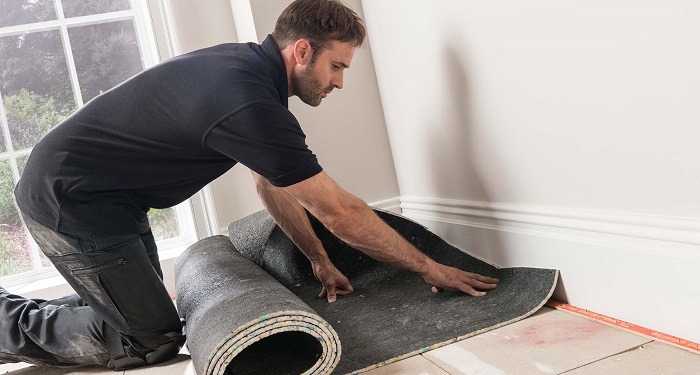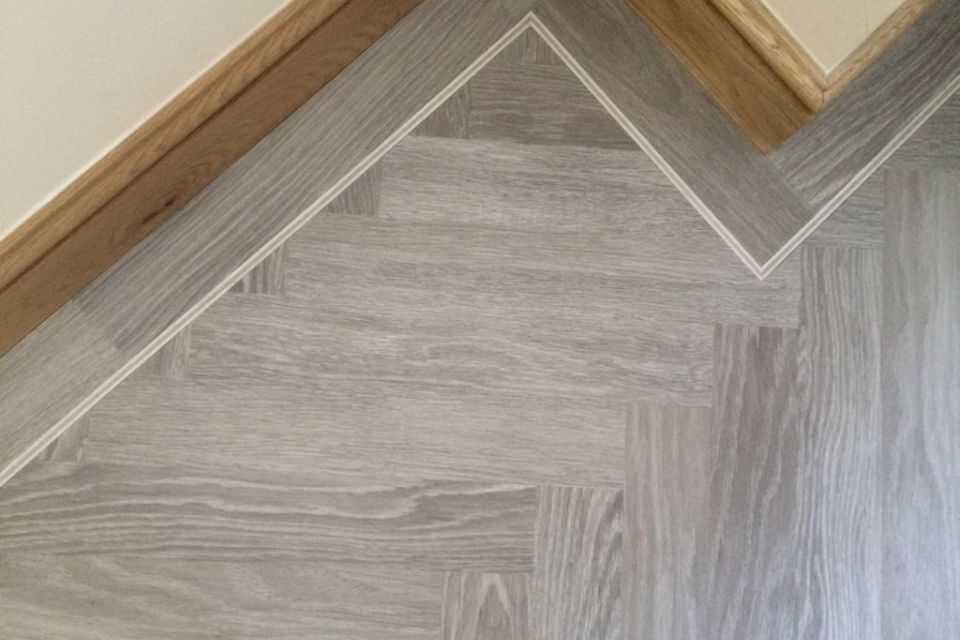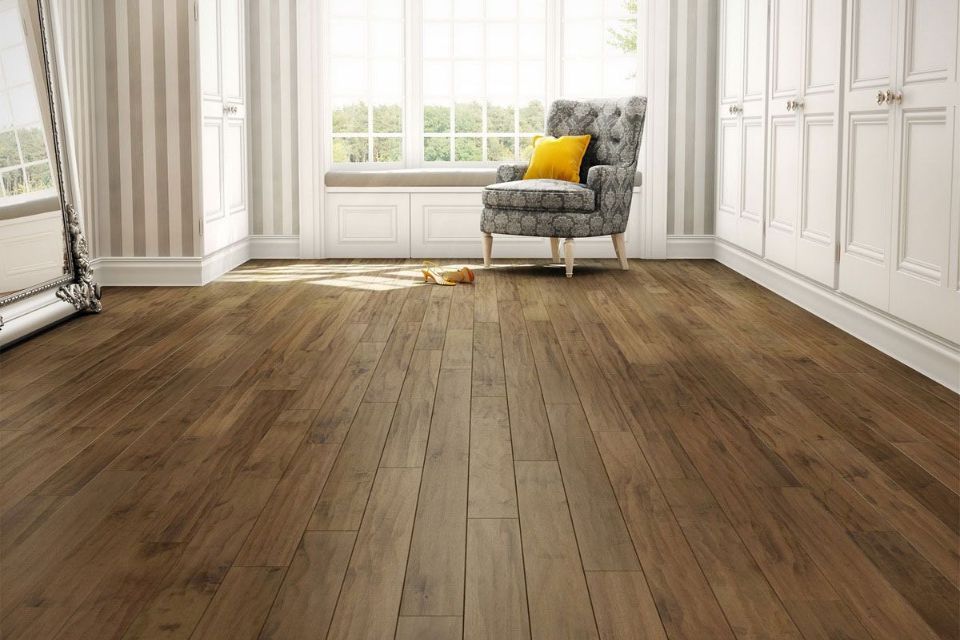Introduction to The Best Underlay
Finding the best underlay for your floor type is vital to maximize the longevity of your flooring as well as to protect it from environmental damage such as that caused by moisture.
Our guide to the best underlay will explore the various types of underlay that exist and look at the best underlay for many different types of flooring. This article will prove helpful if you are planning to install a new underlay or if you simply want to expand your knowledge of the subject.
What is Underlay?
We will now define what underlay is. For this section, we will also look at why it is used, how long it’s been in use and the consequences of not using an underlay. Underlay is a barrier that is installed below your flooring. The primary purpose of underlay is to protect your floor from damage such as that caused by temperature and moisture.
A good underlay will also improve the feel of walking along the floor in a given room. Underlay has been around since the 1940s and increased in popularity during the second half of the last century.
The absence of an underlay can make walking along the floor uncomfortable and leave your flooring vulnerable to different forms of environmental damage. However, some floors may not need an underlay. This includes vinyl flooring which may or may not require one.
Types of Underlay
In this section, we will explore the various types of underlay that exist. We will also discuss when they would be used and lay out their pros and cons.
Felt Underlay
Felt underlay is a traditional form of carpet underlay which tends to consist of wool. It is used as an underlay which can extend the longevity of a carpet. It also provides excellent support for carpet flooring. Felt underlay is made from natural fibres and therefore doesn’t give off any volatile organic compounds (VOCs).

Pros:
- Doesn’t give off any VOCs.
- Any felt product should be 100% recyclable.
- Can offer heat and sound insulation.
- Very firm.
Cons:
- Not as widely available in stores as some other types of underlay.
- Designed for carpets and unsuitable for most types of flooring.
- The underfoot is not as strong compared with some other types of underlay such as combination underlay.
Combination Underlay
Combination underlay is that which consists of two distinct materials, those being felt and rubber. Combination underlay is ideal for installation below a carpet and offers properties such as thermal insulation and durability.

Pros:
- Offers better insulation than some other types of underlay.
- Provides great levels of durability.
Cons:
- Designed for carpets and unsuitable for most types of flooring.
Sponge Rubber Underlay
This type of underlay comprises soft sponge rubber. It is available in a traditional waffle form and a flat rubber form which is more modern. Waffle sponge rubber will flatten faster than flat rubber. Both versions of this underlay are used beneath carpet flooring.
Waffle sponge rubber is more suitable for areas with low foot traffic like a bedroom while flat sponge rubber is more suited to high traffic areas such as the living room. Technics 6 is a popular Duralay underlay product that is based on sponge rubber.

Pros:
- Provides a soft underfoot and is second in softness only to PU foam underlay.
- Particularly solid underlay.
Cons:
- If you buy a low-budget product, it may fall apart and flatten with time.
- Waffle flattens more easily than most types of underlay.
Crumb Underlay
Another type of underlay is crumb rubber underlay. It is made from ‘crumbs’ of rubber taken from the tyres of used cars. Crumb rubber underlay is used for carpet flooring.
This type of underlay can also be considered an acoustic underlay as it provides astounding sound insulation due to the properties in the rubber used.
Tredaire is a popular brand which offers many types of underlay. Among tredaire underlay products is crumb rubber underlay.

Pros:
- Very sturdy and dense.
- Great sound insulation ability.
- Can easily recover from furniture marks.
- Tends to be made from 80-100% recycled materials, making it environmentally friendly.
Cons:
- May feel particularly hard to walk on.
PU Foam Underlay
PU foam underlay is especially popular among consumers. Consisting of recycled furniture foam, a PU foam underlay can be purchased in various thicknesses with different options available.
This way, you can find the right product to suit your budget. Thicker PU foam underlay will provide better heat and sound insulation while also improving the feel of walking along the floor.
PU foam underlay is most suitable for a bedroom as it will offer a long-lasting soft underfoot, especially given that a bedroom will have less foot traffic than many other rooms in a home.
Cloud 9 underlay in cirrus form is an example of a popular PU foam underlay product. Cheap underlay can be bought from online sites such as Flooring UK, eBay and Amazon.

Pros:
- Provides an especially soft underfoot.
- Exceptional heat insulator.
- Made from recycled material.
- Not all products are limited to carpet flooring.
Cons:
- Will gradually flatten with time.
- Does not recover from furniture markings as well as rubber underlay.
Best Underlay for LVT
For this section, we will look at the best type of underlay for luxury vinyl tile (LVT) flooring. We will also look at topics such as the consequences of using suboptimal underlay types for LVT flooring.
Underlay is not always used with this type of flooring and sometimes LVT flooring will come with a built-in underlay. If you wish to purchase an underlay for LVT flooring, the best type to go with is one that is foam-based. However, other options exist.
Sun heat underlay is ideal if your flooring is exposed to high temperatures and is flexible. Sound insulation LVT underlay is also available. Products such as Livyn Basic are designed for any common type of vinyl flooring installation.
Some products for vinyl flooring are specifically suited to flexible floors while others are designed for rigid flooring and some can be used for either.
In most cases, a general foam underlay can be used for an LVT floor because of its noise reduction capabilities, durability and its capacity to protect against moisture. It also offers excellent heat insulation.
Failing to install an appropriate underlay for LVT may leave your flooring more exposed to environmental damage as well as seeing your underlay have a reduced lifespan compared to a foam-based underlay if it were to be installed.
Suboptimal underlay types will deteriorate and become damaged more quickly than a high-quality foam-based underlay.
Check Prices on AmazonBest Carpet Underlay
We will now discuss the best underlay type for carpet. We will explain what this type is, why it is the best underlay for carpet flooring and what would happen if you were to use another type of underlay with carpet flooring.
The best type of underlay for carpet is PU foam. It is the best option due its many advantages over alternative types of underlay such as its strong heat insulation abilities and the soft underfoot it provides. However, sponge rubber is another solid option.
Choosing a less than optimal type of underlay could see your underlay decline and become damaged more quickly while the flooring itself could be left more exposed to damage such as that which is caused by moisture.
Check Prices on AmazonBest Stairs Underlay
What is the best type of underlay for stairs? We will answer this question and more in this section. Once more, PU foam is the best choice of underlay type in this instance.
Not only does it offer the aforementioned benefits of insulation and a soft underfoot but it's relatively easy to install. Other types of underlay will likely offer a suboptimal performance as a stair underlay.

Waffle sponge underlay for example, is not well suited to high-traffic areas like stairs and crumb underlay may not feel particularly comfortable to walk on. You want an underlay that will feel comfortable and prove long-lasting since stairs will receive plenty of foot traffic, therefore a PU foam underlay is probably your best bet.
Check Prices on AmazonBest Vinyl Underlay
We will now take a look at the best underlay for general vinyl flooring. We will discuss what the best type of underlay for vinyl flooring is, why it is the best and look at the consequences of choosing another type of underlay with vinyl flooring.
As with LVT flooring in particular, you may not need an underlay for your vinyl flooring and in some cases the underlay may come with the flooring. If you decide to buy an underlay for a vinyl floor, a foam-based option is again our top recommendation.
Its superior qualities and longevity make it the best choice for vinyl flooring in general. You preferably want a product with high density foam.
There also exist products specifically designed for vinyl flooring. Livyn Basic is a good example of an underlay which is made for vinyl floors in particular. A suboptimal type of underlay for vinyl flooring will likely reduce the longevity of your underlay and flooring as well as reduce their ability to resist damage, especially in the long-term.
Check Prices on AmazonBest Laminate Underlay
The focus of this section is that of a laminate floor underlay. We will discuss what the best type of laminate flooring underlay is among other topics. As with the previous options, a foam-based underlay is probably your best choice. With that being said, it may depend on your flooring in particular.
Some flooring may need the advantages of certain types of underlay over others. If a foam-based underlay is the best option for your particular flooring, choosing another option could mean suboptimal results. A foam-based underlay is the best option due to its durability, strength and longevity.

You may choose to purchase a product that is designed specifically for laminate flooring. Products like Super Gold 5mm and Vitrex Premier Wood & Laminate Underlay Boards are good choices for laminate flooring.
Many other types of underlay will not be suited to laminate flooring. Fitting the wrong type of underlay will mean the longevity and durability of both your flooring and underlay will be reduced.
Check Prices on AmazonBest Hardwood Underlay
We will now discuss the optimal hardwood flooring underlay. We will also explain the consequences of choosing another type of underlay for hardwood floors. In this case, there are two top options to consider, those being slotted or glued foam-based underlay and sticky backed underlay.
Slotted underlay offers good heat and sound insulation and often slotted underlay products will feature fire resistant properties. Sticky backed underlay tends to come in a foam-based form. Many of these products are particularly resistant to mould and mildew and offer good sound insulation.
It’s relatively easy to install a slotted or sticky backed underlay. Other types of underlay may not even be suitable for hardwood as many underlay products are designed for carpets.
Further, choosing another type of underlay may mean significantly reduced results in terms of the longevity and damage protection afforded to your flooring.
Check Prices on AmazonBest Underfloor Heating Underlay
We will now discuss the best underlay for underfloor heating. We will also look at topics such as what can make an underlay compatible with underfloor heating. The best type of underlay for this type of flooring is underfloor heating underlay, a type designed for this specific flooring. Quicktherm Underfloor Heating Underlay is one of the best products on the market for underfloor heating.
Different types of underfloor heating underlay include hydronic underlay heating and forced air underfloor heating. When it comes to underfloor heating underlay, you need to be aware of the tog rating.

The underlay’s tog rating (the thermal resistance of the underlay) should preferably be lower than 1.0 and the lower it is the better. Taking this into consideration can help you find the best product for your flooring.
In order for an underlay to be compatible with underfloor heating, it will need a low tog rating and a strong ability to insulate heat in general, perhaps due to the materials used or/and because of the way in which it is installed.
Choosing an underfloor heating underlay will have these advantages. Failing to buy appropriate underfloor heating underlay will mean that your flooring will not have sufficient heating.
Check Prices on AmazonBest Engineered Wood Underlay
For this section, we will analyse the best underlay for engineered wood flooring. We will also discuss topics such as what could happen if you were to use a different type of underlay with this flooring. Underfloor heating underlay as in the previous section is the best type of underlay for engineered wood.
These will be products with a high quality of thermal insulation. Other options include standard foam underlay and fibre boards. Many other types of underlay are only suitable for carpet and will not work for engineered wood, so it’s vital that you buy the right underlay for this type of flooring.
Check Prices on AmazonSources
- https://www.ukflooringdirect.co.uk/what-is-flooring-underlay
- https://www.interfloor.com/heritage/
- https://lifestyleflooringuk.co.uk/blog/post/do-you-need-underlay-for-laminate-flooring
- https://www.loverenovate.co.uk/advice/best-carpet-underlay
- https://www.flooring-professionals.com/flooring-resources/what-exactly-is-luxury-vinyl-tile/
- https://www.carpet-underlay-shop.co.uk/blogs/news/do-i-need-underlay-for-luxury-vinyl-tiles
- https://www.builddirect.com/learning-center/flooring/vinyl-flooring-underlayment/
- https://www.woodfloorwarehouse.co.uk/advice-inspiration/faqs/what-is-the-best-underlay-for-laminate-flooring-on-wooden-floorboards
- https://www.underlay4u.co.uk/blog/2018/01/08/underlay-for-underfloor-heating/







